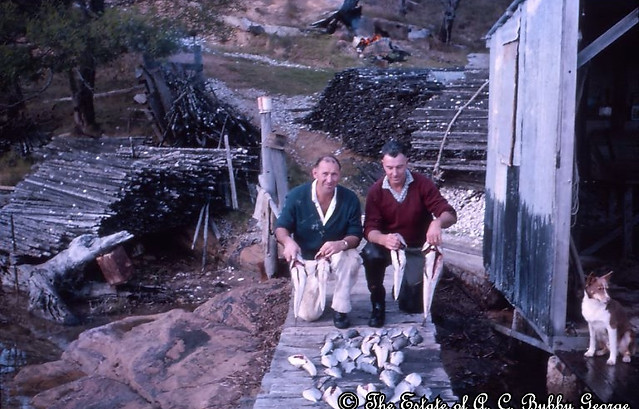
Stick Culture:
Stick culture became an industry mainstay from the 1930s.
It commenced with oyster spat settling on sticks placed in known spatfall areas, but with no local stocks of the borer-resistant black mangrove, wattle & other native timber stocks were substituted. After the oyster seed had set, the sticks were relayed to growing areas where they were initially laid out in circles of three or four sticks in a “stoop” similar in appearance to native American tents.

The oysters were then grown to maturity on horizontal racks in the inter-tidal zone, a process that could taking from three to four years with care necessary during the first two years to protect from excessive heat & predators such as bream, octopus & stingray.
Once mature, the oysters were removed & graded for marketing – first grade oysters, the largest, at 15 to 20 per kg; followed by “bistro” or “bottle” grade at 25 to 35 per kg. Oysters smaller than this were returned to estuaries to continuing growing.
